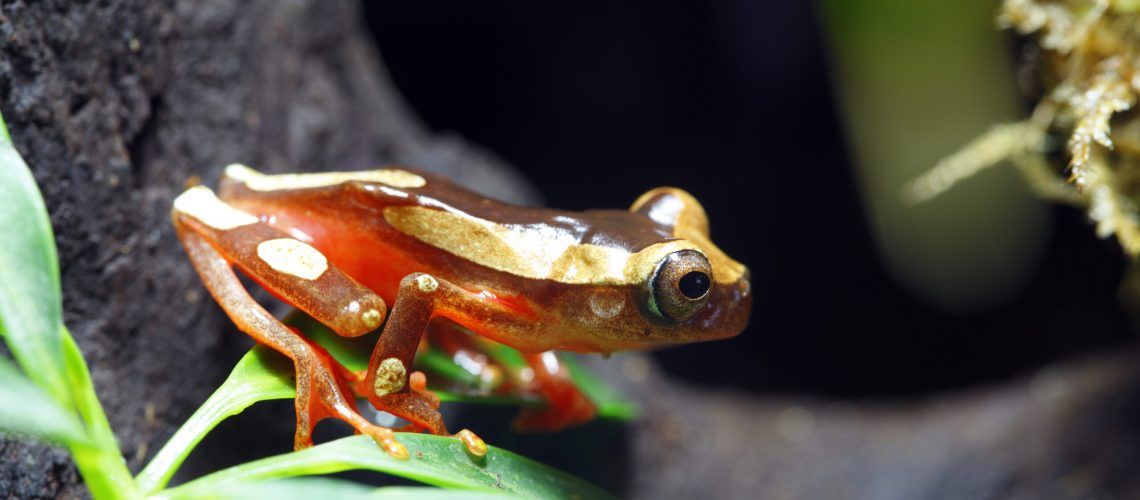
Can Wildlife Adapt to Climate Change?
The phrase “climate change” provokes a different response in everyone. Some worry about the future for their children and humanity, others worry about the impending political effects, some don’t believe in it at all. The one thing that most can agree on is the fact that the environment will be forever changed. For humans, this means many things. Where we get our water, energy, and food will have to change immensely in the next 30 years. We will adapt, we will move, or we will die. These 3 options are bleak, but they are the choices that animals face when put against an environmental change. Evolve, or be lost to evolution. As not only top predators, but with the advantage of technology and the awareness of what is to come, humans can fight the effects of climate change in ways that no other animal can. But what happens to every other living thing when the environment that they have evolved, sometimes millions of years, to fit perfectly in changes? Current scientific predictions estimate that anywhere from 0-54% of species could become extinct from climate change.
Here is how some animals are fighting that fate:
Move
In the case of the many polar bears, the solution has been to move. As the only type of bear to be considered a marine mammal because of their dependence on the ocean for their food and habitat, ice is incredibly important to polar bears. The loss of sea ice due to warming temperatures is forcing polar bears to move south in search of food. Their normal diet of seals cannot be sustained when the ice isn’t available to hunt from. In Alaska, the decline of sea ice in the summer and fall has led to an increasing trend of land use for the polar bears. A heartbreaking article reported a polar bear hundreds of miles from its normal hunting grounds, in search of food. Unfortunately, a story that will become more common as the seas continue to warm.
Adapt
The second response that animals have to a significant environmental change is adaptation. Scientists have found that pink salmon in Alaska are migrating nearly two weeks earlier than they did 40 years ago, as a response to warming waters. Fish populations can be vulnerable to fluctuating temperatures. By migrating early, the fish can compensate for the warming of waters earlier in the year. The salmon then avoid the increased risk of disease and mortality that comes from being in fluctuating water temperatures. While it is unknown whether the fish will continue this pattern in the future, or if this will be enough of a change, it does give hope that some animals can evolve and adapt to climate changes.
Die
The infamous golden toad, once located in South America, is believed to be the first species to become extinct as a direct result of climate change. Last seen in 1989, the amphibians were sensitive to environmental changes as they breathed through their skin. As their habitat in the rainforest became hotter and drier, they were more susceptible to disease, and eventually eradicated. If animals cannot move, or adapt to environmental changes, this is the fate they may face in the future. Coupled with over hunting and other forms of human intervention, every animal is in danger. SAFE Worldwide is working to not only educate on these issues but protect endangered species. Not just from poaching, but from environmental factors as well. Animals don’t have the ability to advocate for themselves or their future, but we do.
Sources Cited
Bloudoff-Indelicato, M. (2012, July 13). Salmon Evolve to Cope with Climate Change. Scientific American. https://www.scientificamerican.com/article/salmon-evolve-to-cope-with-climate-change/
Campisi, J. (2019, June 19). Polar bear spotted hundreds of miles south of normal hunting grounds. TheHill. https://thehill.com/blogs/blog-briefing-room/news/449259-polar-bear-spotted-hundreds-of-miles-south-of-normal-hunting
Distribution and Movements of Polar Bears. (n.d.). https://www.usgs.gov/centers/asc/science/distribution-and-movements-polar-bears
Golden Toad (Bufo periglenes) – Extinction.photo by Marc Schlossman. Extinction. (n.d.). https://www.extinction.photo/species/golden-toad/
Urban, M. C. (2015, May 1). Accelerating extinction risk from climate change. Science. https://science.sciencemag.org/content/348/6234/571


